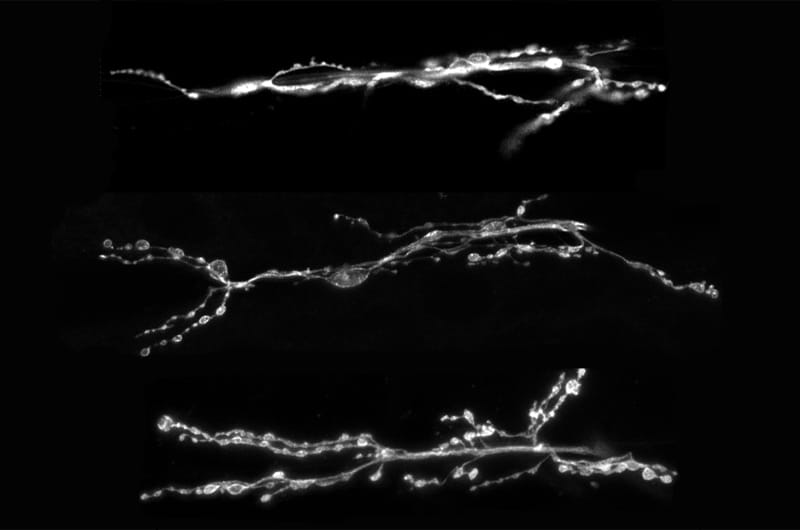Double Duty: Proteins Associated with Schizophrenia Hang Around Longer Than Previously Thought
 By Frank Otto
By Frank Otto

The discovery that a particular protein doesn’t just give cells a job but also sticks around to tell them how to do these new assignments could provide insight into schizophrenia, as well as a neurodevelopmental disorder, according to a new study by a Drexel University research team.
The team discovered that the protein, called TCF4, remains present in cells after neurogenesis — where they turn jobless cells into neurons. Neurons are cells in the nervous system that send specific signals to each other, and scientists believed that TCF4 degraded and disappeared at that stage. However, Drexel researchers found that TCF4 sticks around and restricts the number of synapses neurons make.
“It seems these proteins are performing double duty,” said Daniel Marenda, PhD, associate professor and director of the Biology graduate program in Drexel’s College of Arts and Sciences. “Not only do the proteins take a cell that doesn’t have a job and give it one, but once the cell has a job, it tells that cell how to do it.”
The study, “Type I bHLH Proteins Daughterless and TCF4 Restrict Neurite Branching and Synapse Formation by Repressing Neurexin in Postmiotic Neurons” was published in Cell Reports. Its first author, Mitchell D’Rozario, PhD, was Marenda’s graduate student, and is now a post-doctoral researcher at Washington University School of Medicine.
While the protein at the center of the study is referred to as TCF4 in humans, rats and mice, it is called Daughterless in Drosophila, or fruit flies, where the protein’s persistence was discovered.
“We found, rather unexpectedly, that the fly protein Daughterless was present in neurons, cells that already had a job. This was odd to us,” Marenda said. “So we decided to investigate what Daughterless might be doing in the cells.”
When they found that Daughterless was regulating the number of synapses in neurons, the team analyzed TCF4 in mice and found that it was doing the exact same thing. The protein had not disappeared, but was still present and very active.
These findings are particularly important because of the association TCF4 gene variants have with schizophrenia and Pitt-Hopkins Syndrome, a neurodevelopmental disorder.
“Mutations in TCF4 are associated with both,” Marenda explained. “So we think that TCF4 is most likely involved in helping to form the proper number of synapses a cell makes, so that the information flow in the nervous system doesn’t get confused and dysfunctional. When you lose these proteins, you suddenly get too many synapses and it disrupts the nervous system function.”
Marenda said that there is evidence that cells making too many synapses are associated with autism. Further study of the presence of TCF4 (and Daughterless) in neurons could uncover more about the relationship between synapse number and adult nervous system function.
“Depending on the severity of the mutation’s effect on TCF4, you may get differing outcomes,” Marenda said. “Too severe a mutation may give you a strong effect like Pitt-Hopkins Syndrome, while other changes in the gene may increase your risk of schizophrenia. But the underlying mechanism may be similar.”
In This Article
Contact
Drexel News is produced by
University Marketing and Communications.
